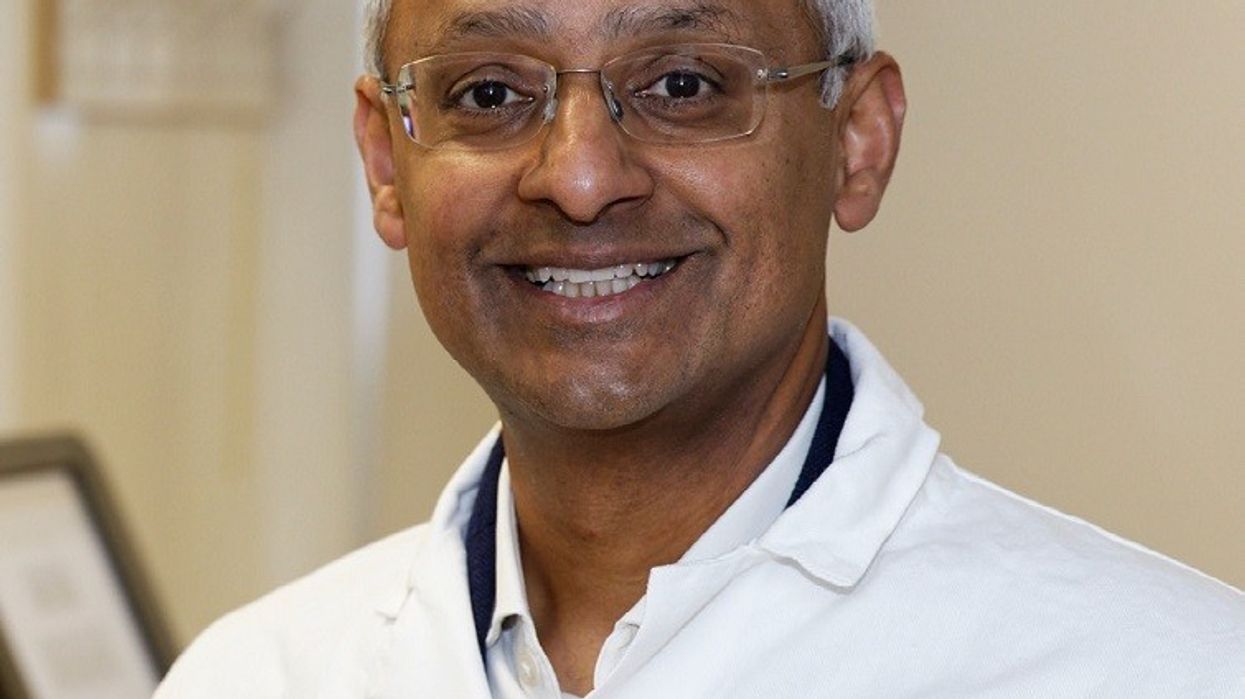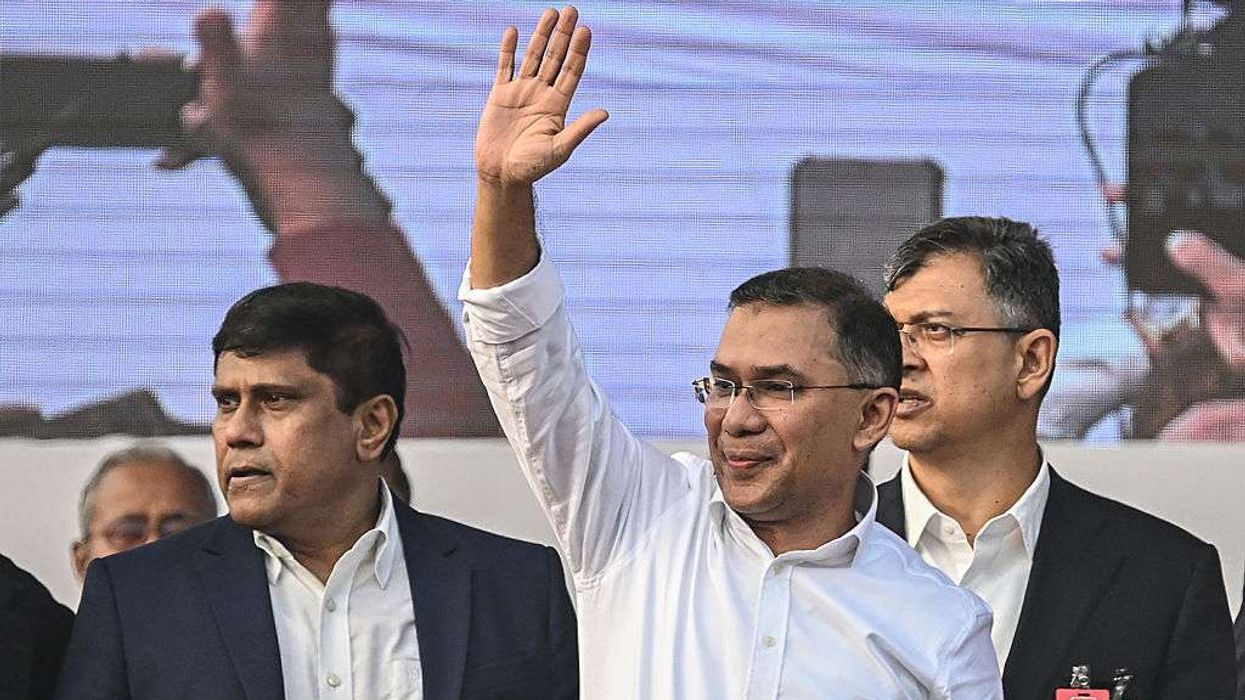By Amit Roy
SIR Shankar Balasubramanian, a Cambridge University professor of chemistry, has spoken to Eastern Eye about the 2020 Millennium Technology Prize that he and a colleague, Professor Sir David Klenerman, have been awarded for their “development of revolutionary DNA sequencing techniques”.
They hope their work will make it possible for cancers to be detected early and also help with personalised treatment targeted at individual patients.
Both professors were in Helsinki last week to accept “one of the world’s most prestigious science and technology prizes”, awarded by Technology Academy Finland. It was handed over by Finland’s president, Sauli Niinistö. Worth one million euros (£863,000), the prize is given every two years for “ground-breaking technological innovations that benefit millions of people around the world”.
“The duo’s Next Generation Sequencing (NGS) technology means DNA can now be read in super-fast times,” said a statement.
“This means huge benefits to society, from helping the fight against killer diseases such as Covid-19 or cancer, to better understanding crop diseases and enhancing food production.”
The technology prize was launched in 2004, when it was awarded to Sir Tim Berners-Lee for the World Wide Web.
Speaking after returning home from Helsinki to Cambridge, Balasubramanian recounted the collaboration on DNA sequencing that he began with Klenerman in the mid-1990s. In 1998, they started a company, Solexa, whose technology was acquired by the American firm Illumina in 2007. “I stayed involved with Illumina until 2017,” said Balasubramanian.
Explaining the complex science behind DNA sequencing, he said: “DNA is the fundamental information that defines cells and organisms. DNA is composed of a string of four letters – G, C, T and A – and arranged in a particular sequence. One copy of the DNA sequence in the human genome is a very long code – 3.2 billion letters. The technology that we created reads that code in a way that is more than a million times faster and lower in cost than the technology for sequencing back in 1997 when we were just starting this project.”
The first human genome project “took 10 years and involved very many people across the world. And the cost was of the order of billions of dollars. The latest systems using our technology will sequence one human genome per hour on one instrument. And the cost is below $1,000 for one genome, which is very accurately sequenced.”
On how all this is relevant for cancer, he said: “Cancer is caused by changes to DNA. That’s at the root cause of cancer. And all cancers are not the same.”
Cancer genome sequencing research “is leading to a better understanding of how to deploy therapeutics against cancer. Some people call this personalised medicine, where a particular cancer with a particular pattern of genetic changes may be more responsive to a certain therapy. So the information can be used for therapy selection. I would stress that we are in the early phases of this. And as more and more work is done to sequence tumours, over the next 10 to 20 years, we’ll find out the full extent to which genomic information can be used.
“If you can detect cancer early, the ability to treat it successfully and have a better patient survival outcome is much higher. Anything that can help patient outcomes cannot come soon enough. I think with cancer, we’ve come a long way. And clearly there’s a long way yet to go. Certainly, we are optimistic that over the next 10-20 years, there will be more transformative change that will translate into patient care.
“One is predisposition. Certain mutations and particular genes can predispose to cancer. So it’s an early warning. The hope is that there may be a new modality for detecting cancer earlier. And prevention is certainly better than cure.”
With Covid, “the pathogens have a genome. And by sequencing the genome of the pathogen, you can also see if the pathogen is changing. And this sort of information allows us to detect variants, and also track the spread of variants.”
It has become apparent Covid affects some much more seriously than others. “There are projects ongoing to try and understand how a patient’s genome might help us predict and understand the difference in response to infection.”
Asked for his views on the pattern of the pandemic in India, Balasubramanian replied: “I think the evidence so far, certainly from countries like the UK, is that rolling out the vaccines quickly clearly made a very positive impact on the population, particularly in terms of reducing the cases of severe illness. The vaccine programme as a whole across all vaccines looks at this stage to be very helpful. So I think in countries like India, and indeed other countries, rolling out the vaccination programme throughout the population quickly and efficiently is one of the important things to focus on.”
Balasubramanian and Klenerman are both based at the chemistry department at Lensfield Road, Cambridge. Last year, the department was renamed after Yusuf Hamied, the head of the Indian pharma giant, Cipla, who had himself once studied chemistry at the same venue.
Hamied, who arrived in London on Monday (24), rated Balasubramanian as “very brilliant. Among the leading chemists of the world, he’s one of the best. His work on DNA is outstanding.”
Their prize citation read: “Professors Balasubramanian and Klenerman co-invented the Solexa-Illumina Next Generation DNA Sequencing (NGS), technology that has enhanced our basic understanding of life, converting biosciences into ‘big science’ by enabling fast, accurate, low-cost and large-scale genome sequencing – the process of determining the complete DNA sequence of an organism’s make-up. They co-founded the company Solexa to develop the technology into a commercial system that was made more broadly available to the world.”
Balasubramanian told Eastern Eye about his family background. “I was born in Madras (Chennai) in 1966,” he said. “I was nine months old when my parents migrated to the UK. I don’t come from a family of scientists. My father – he’s retired now – is an architect. Both my grandfathers were engineers. My mother worked in the civil service.”
He grew up in a rural area just outside Runcorn in Cheshire and was educated at Daresbury (primary) and Appleton Hall High School (secondary). “I was fortunate in getting a place at Fitzwilliam College, Cambridge. I studied natural sciences and ended up specialising in chemistry, particularly organic chemistry. And then I did a PhD in Cambridge.”
After that, he went to Pennsylvania State University as a postdoctoral fellow. “I was tempted to stay in the US because it was certainly an exciting place to do science. One of the senior professors in Cambridge, Sir Alan Fersht, who was a kind of a mentor to me, persuaded me to come back to the UK. And so I came back in 1994 to the chemistry department in Cambridge, and have absolutely no regrets whatsoever. It has been a splendid place to learn to become a professional scientist.
“When I came back as an academic, I was made a fellow at Trinity College. Of course, Venki (Nobel Laureate Venkatraman Ramakrishnan) is at Trinity as well. Amartya Sen (also a Nobel Prize winner) is also a Fellow. (The Indian mathematical genius, Srinivasa) Ramanujan was at Trinity (from 1914- 1919). Being in Cambridge and being in Trinity, you have a lot to live up to if you’re an Indian because there have been many great Indian scholars.”












